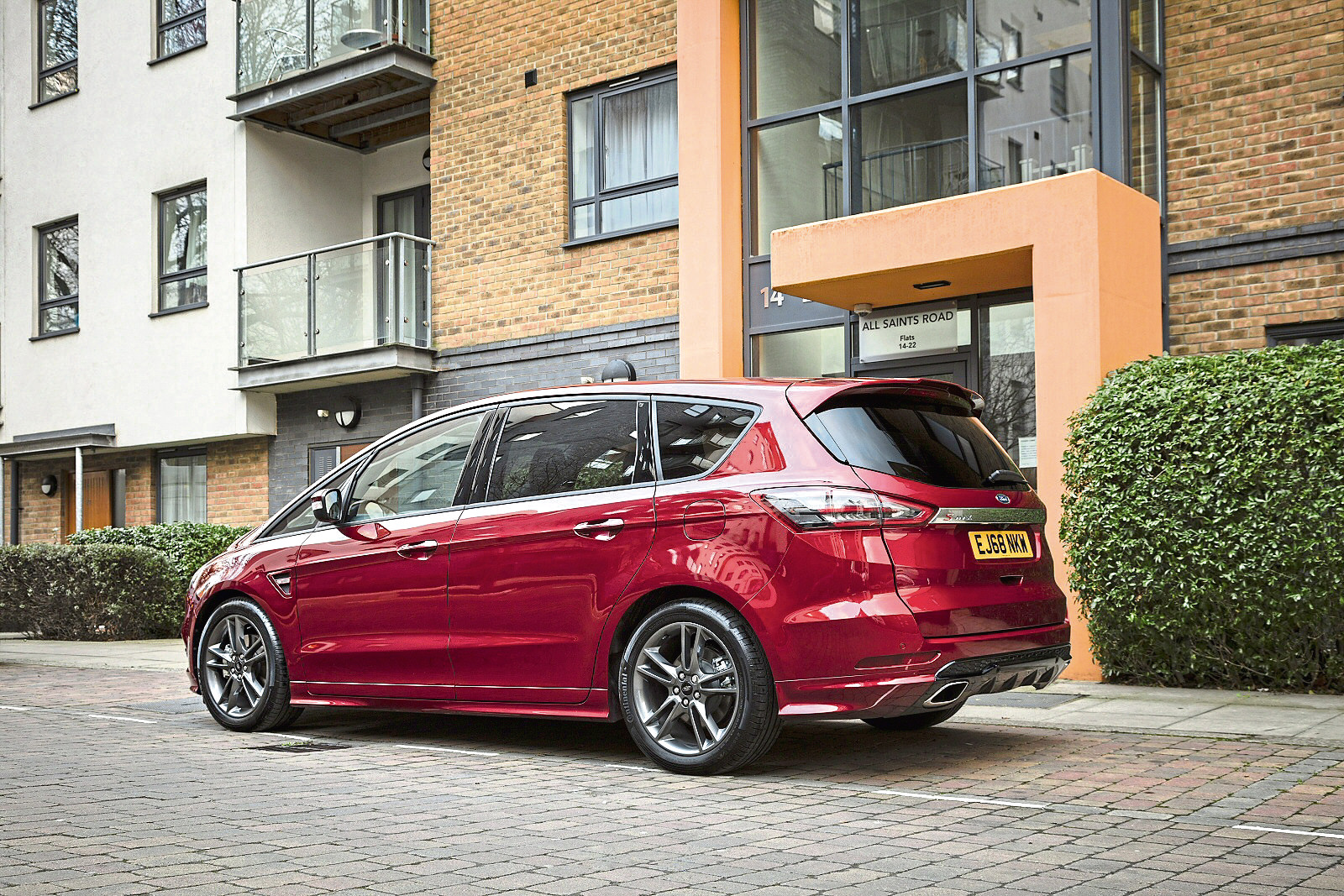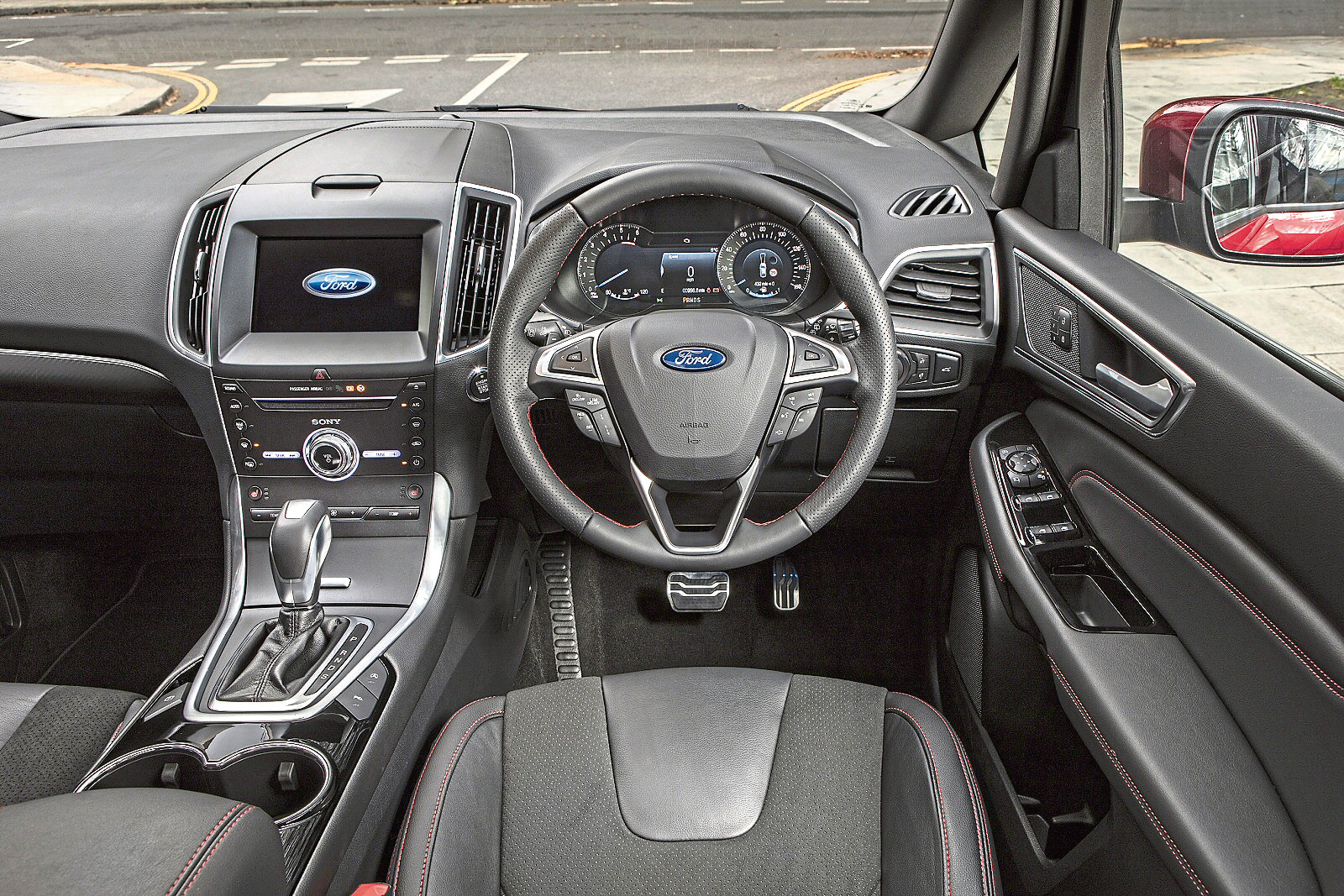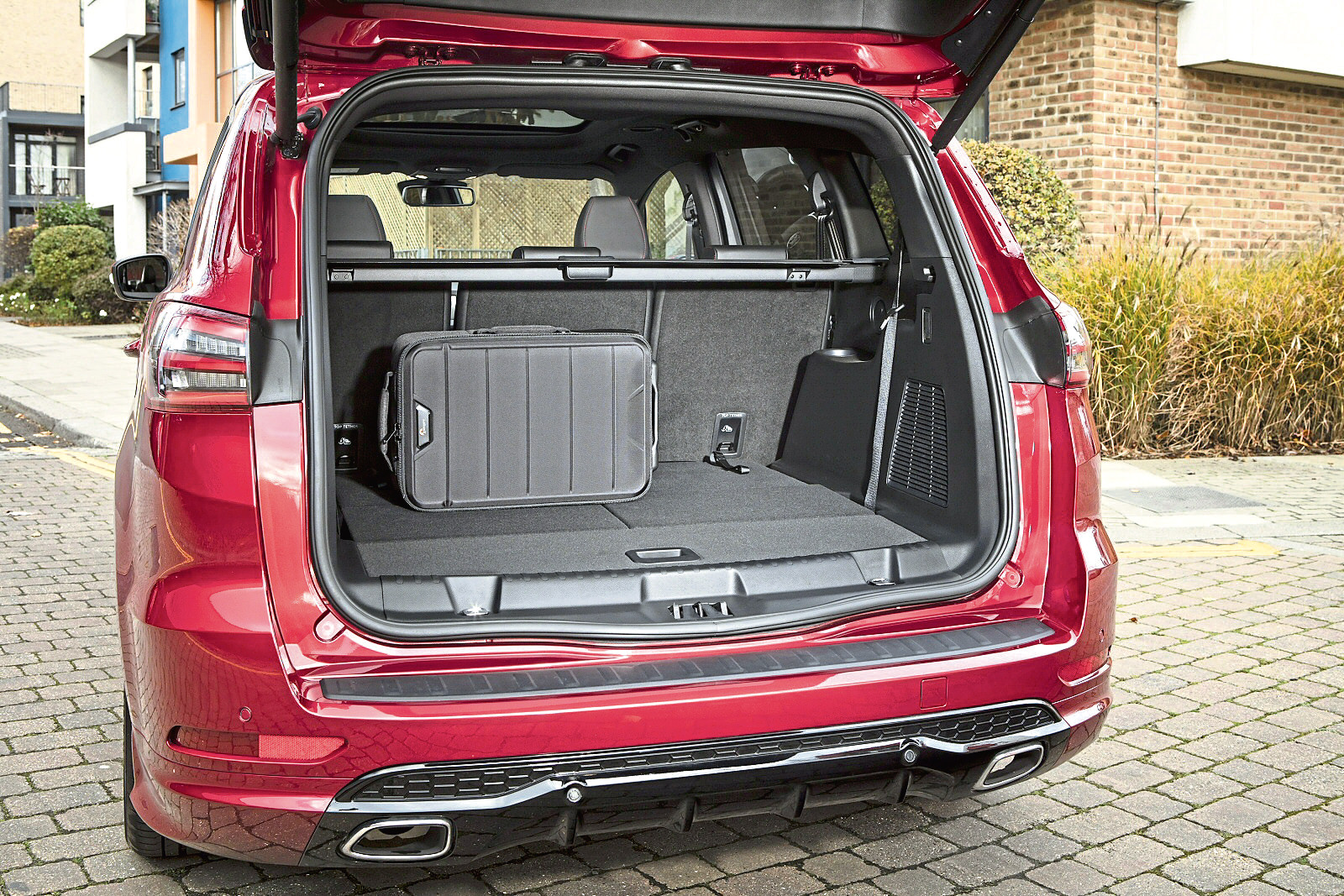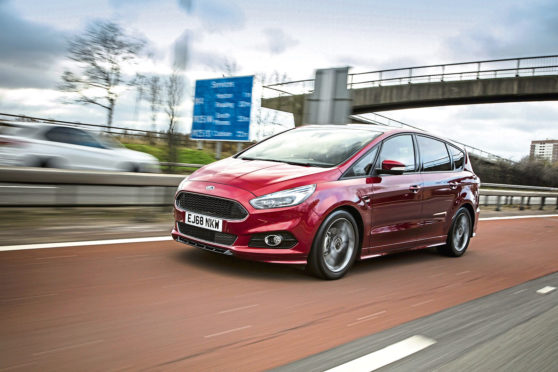Owning an MPV, particularly a large one, isn’t supposed to be one of life’s memorable experiences.
A people carrier is usually a grudge purchase, a vehicle you need rather than one you might want.
Or at least it usually is. Ford thinks differently. That’s why they brought us the S-MAX, here rejuvenated in second-generation guise.
It’s stuffed with segment-leading technology and also includes an AWD option to keep those SUVs in their place.
Plus it claims to be just as stylish and rewarding as its revolutionary predecessor.

We elected to check out this car with the 2.0-litre EcoBlue diesel engine most will want, in this case specified in pokey 190PS guise.
The fact that Ford has its marginally more practical Galaxy model for those only concerned with practical, 7-seat, A to B family transport leaves this S-MAX free to provide something unique in the segment for bigger MPVs: namely, a good-looking car dynamically capable enough to reward the enthusiastic driver.
Other big 7-seaters feel vaguely pointless if you’re alone in them on the move: this one just shrinks around you and encourages you to take the back road home, where you’ll find bodyroll kept impressively well in check for a car of this size.
There’s plenty of traction, too, even if you don’t go for the optional Intelligent All-Wheel Drive system.
Clever Integral-Link rear suspension borrowed from the fourth-generation Ford Mondeo this car’s based upon is fundamental to this impressive showing.
And though the freshly- added electric power steering system isn’t quite as feelsome as the previous hydraulic set-up, a standard Torque vectoring system that lightly brakes the inside front wheel through tight bends and sharpens turn-in still makes this S-MAX feel rewarding through the twisties.
Engine-wise, the range now hinges around a much improved family of EcoBlue 2.0-litre turbodiesel engines, offered in 120, 150, 190 and bi-turbo 240PS outputs.
Here, we’re looking at the 190PS version which with 2WD manages 62mph from rest in 9.7s en route to 131mph.
Improved low-end torque is a particular characteristic of these latest-generation powerplants.
The range also now benefits from a more refined, smoother-sifting 8-speed auto gearbox which alters its shift pattern to suit your driving style.
It also enables the fitment of Adaptive Cruise Control and includes an engine Stop & Go system.
Photos of this second-generation S-MAX suggest styling only lightly evolved from that of the MK1 model but in the metal, that lower roofline, the slimline lights and the muscular rear haunches ensure that this improved version appears sharper and more distinctive than before.
Helping in this is the way that the front A-pillars have been moved further back to create a longer, more sculpted bonnet that flows into the raised, chromed, trapezoidal Ford front grille that’s now familiar from other cars in the company’s range.
And behind the wheel? Ahead of you, through the leather-trimmed three-spoke multi-function steering wheel, there’s a clear, classy instrument cluster that in mid and upper-range models gives you a sophisticated 10.2-inch TFT set-up made up of various inset multi- function displays.
Anything this set-up can’t tell you will probably be covered by the feature that on all models dominates the centre of the dash, the 8-inch SYNC3 colour touchscreen.

The S-MAX now features Easy-Entry second-row seats that provide one-touch access to third-row seating with a new design that tips and slides the seat forward in one action.
Storage also includes new covered stowage in the instrument panel top, a media storage area incorporated into the centre stack, and concealed under-floor stowage behind the third row.
Out back, there’s plenty of room in both second and third seating rows and a luggage capacity that varies between 285 and 2,020 litres, depending on the seat configuration.
List pricing suggests that you’ll be paying somewhere in the £29,000 to £40,000 bracket for your S-MAX, depending upon the variant you choose.
Above base Zetec-spec, there are three further trim levels; Titanium, ST-Line and plush Vignale.
Looking at the various EcoBlue options available, we’d want to find the £350 premium to go from the rather feebly-performing entry-level 120PS unit to the mid-range 150PS version that, priced at around £30,000, probably represents the sweet spot in the line-up.

Assuming you’re happy with a manual gearbox and front-wheel drive, you’ll get the same returns whether you order your S-MAX EcoBlue model with 120, 150 or, as in this case, 190PS.
Specifically, we’re talking 56.5mpg on the combined cycle and 132g/km of CO2.
This second-generation S-MAX, like its predecessor, meets family needs in a dynamic manner that frankly, no other competitor can quite match. For us, it’s the best seven-seater Ford makes.
